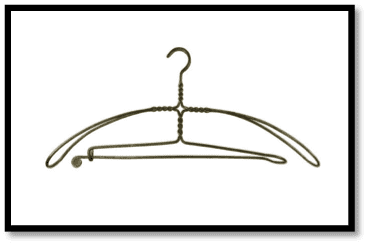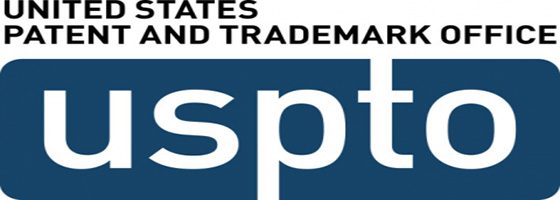As guardian of the nation’s inventions and innovations, the U.S. Patent and Trademark Office (USPTO) is entrusted with keeping the cutting edge of America’s technological progress and achievement razor sharp.

WHO PUT THE SCOTCH IN SCOTCH TAPE? — Richard Drew of 3M Co. invented cellophane adhesive tape in 1930. Legend has it that the “Scotch” brand name was chosen due to the overly frugal (“Scotch”) skimping on the tape’s adhesive backing. Or were the company’s executives enjoying their favorite libation when brainstorming about a catchy brand name?
The abrupt departure of USPTO Director, Michelle Lee, last June may have unsettled things there temporarily. (Lee had been expected to stick around, at least for a while.) But her replacement, Joseph Matal, formerly a USPTO associate solicitor, has settled in. The work that prevents pirated products and processes from undermining America continues, full steam ahead.
Ladies and Gentlemen (Re) Start Your Proposal Efforts
On July 10, the Contracting Office updated the contract schedule. The Draft RFP’s expected release date has been moved back to end of August; feedback is expected by mid-September; the final RFP will hit the street early November — and proposals will be due a month after that. The technical Challenge time frame is slated for Q3FY18, with contract award taking place Q1FY19.
What USPTO is after here is software development and integration services for Commercial off the Shelf (COTS) products with customized software applications, database applications, and other solutions.
Their priorities are as follows:
- A Technology Stack capable of evolution,
- An emerging technologies focus,
- The ability to rapidly assemble mature, skilled teams to meet emerging technology needs,
- Rapid and continuous delivery, and
- Achievement of rapid, quality outcomes.

GOT A MATCH? – LIGHT MY.…FIRE! – In 1889, Pennsylvania lawyer Joshua Pusey invented book matches; the wooden ones he used for lighting cigars were too bulky for his vest pockets. And/or maybe lighting them with $100 bills was getting too expensive.
There are two separate parts to the SDI-NG2 contract. One is an SBSA, the other, a free and open. The ceiling value for the incumbents on the former is $236 million, and the latter, more than double that, $536 million. Otherwise, the SBSA and the F&O are identical.
Incumbents on USPTO’s current contract are: For the SBSA portion – Maximus (as the result of acquiring a small business), Criterion Systems, Salient Solutions, Niksoft Solutions and Phacil, Inc.; for the F&O portion — Unisys, SAIC, Pragmatics, CSRA (CSC); and CGI Federal.
USPTO’s IT Transformation Vision
SDI-NG2 calls for the following capabilities: System Development Life Cycle (SDLC) Program Management, System and Software Development, Architecture and Design, Coding, Unit, Integration and Regression Testing, Configuration and Release Management, Bug Triage; Production Support and User Integration and Design — all typical for this sort of IT effort.

CAN YOU OPEN THIS EASILY? – In 1858 Ezra J. Warner of Waterbury, CT patented the first can opener, which was used by the Union Army in the Civil War. Prior to its development, soldiers probably used bayonets to open cans.
To achieve this vision, the USPTO has established strategic plans to optimize quality and timeliness, including the following IT objectives:
- Ensure Optimal IT Service Delivery to All Users,
- Provide Leadership and Education on Intellectual Property Policy and Awareness, and
- Leverage IT Investments to Achieve Business Results.
NEXT GENERATION is key here, and key to submission of a winning proposal and bid effort. Because what USPTO is after is not the same old, same old IT solutions, — nor even better, faster, cheaper versions of legacy systems and approaches. Instead, they want contractors who can stay ahead of the curve and apply streamlined, advanced non-conventional iterative processes to COTS software systems, tailored efficiently and effectively to meet USPTO’s unique requirements.
Application of Software Innovations

HANGING IT UP – In 1903, Albert Parkhouse of Jackson, MI was tired of putting hooks in the wall to hang coats on. He twisted wires together in a now familiar form.
As detailed in the presol material, and during the contract’s Industry Day presentation, what USPTO is looking for is — firms that have clearly demonstrated their grasp of and ability to use the following methodologies:
DevOps – The software development method that stresses communication, collaboration, integration, automation, and measurement of cooperation between software developers and other IT professionals,
Agile – The group of software development methods in which requirements and solutions evolve through collaboration between self-organizing, cross-functional teams,

NO FLIES ON THIS! — In 1905 Frank Rose of Weir, KS, a Boy Scout Scoutmaster, invented the “fly bat”. His troops distributed them to the town’s homes.
User-Centeric Design – The process (not restricted to interfaces or technologies) in which the needs, wants, and limitations of end users of a product, service or process are given extensive attention at each stage of the design process,
Scrum – The Agile software development model based on multiple small teams working in an intensive and interdependent manner,
Kanban – The method for managing knowledge work with an emphasis on just-in-time delivery while not overloading the team members, and
Scrumban – Integrating Scrum and Kanban to foster improvements continually.
In order to win, bidders must show they’re cutting edge……and prepared to remain that way over the contract term. And this has to be reflected in the proposals and those leading the capture and business development charge have to soften the target with convincingly high explosive innovation proof point material.





Leave A Comment